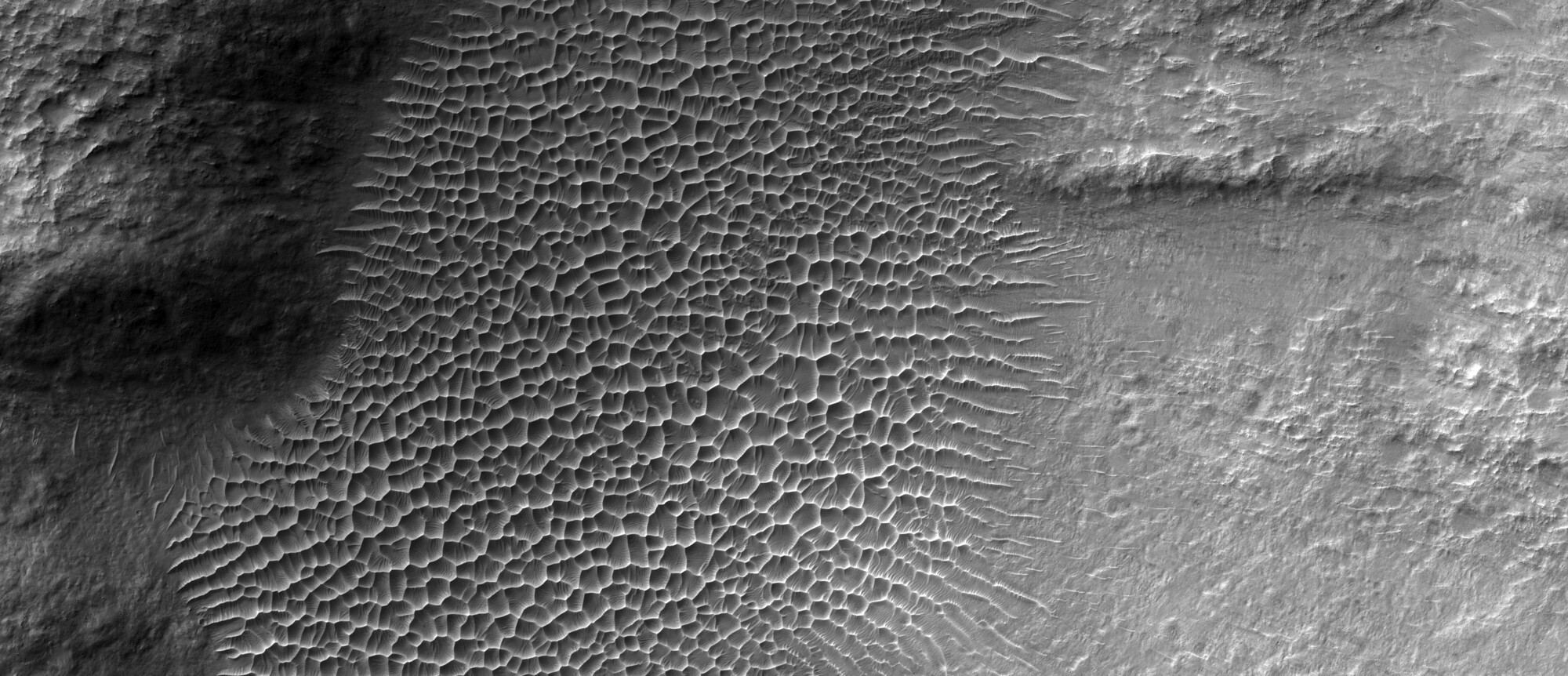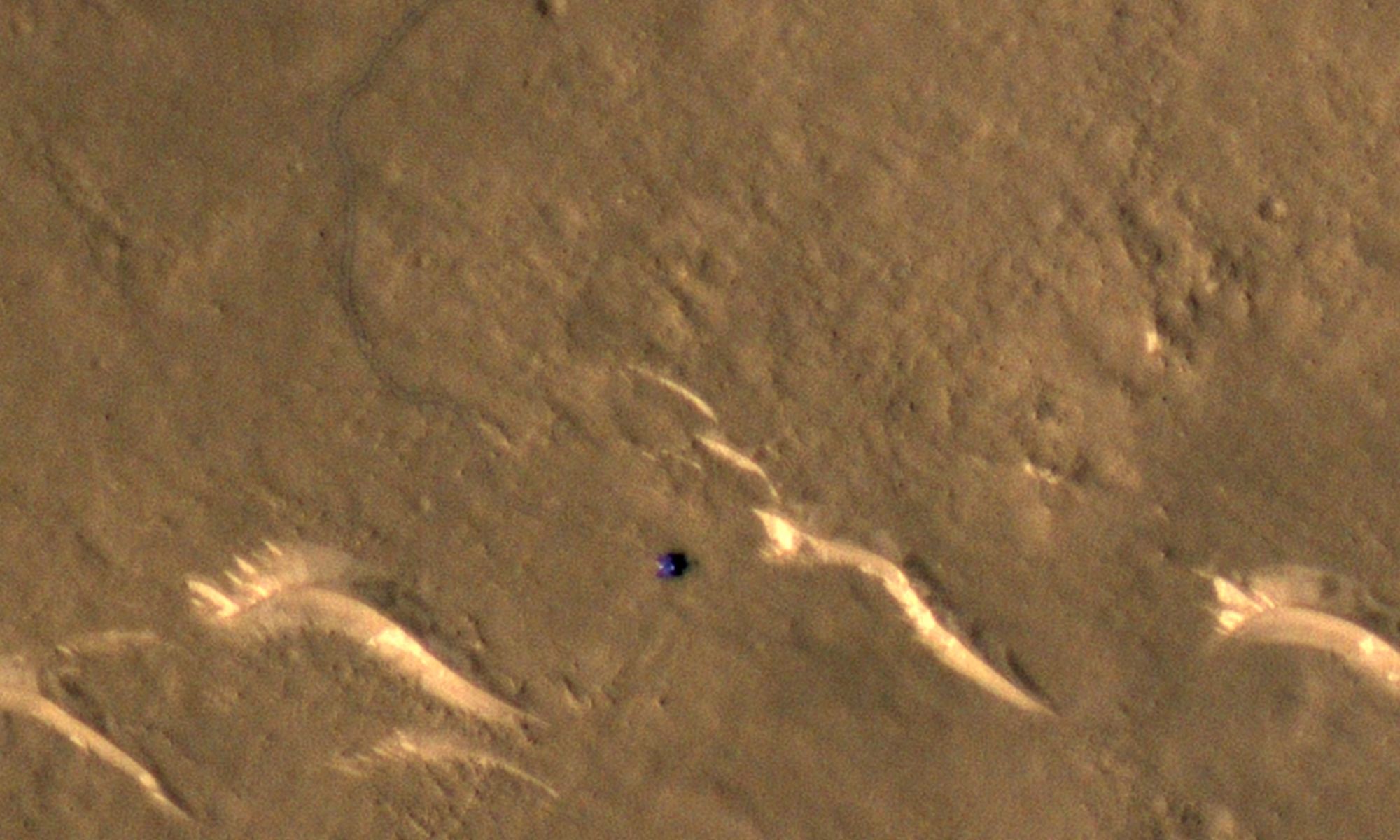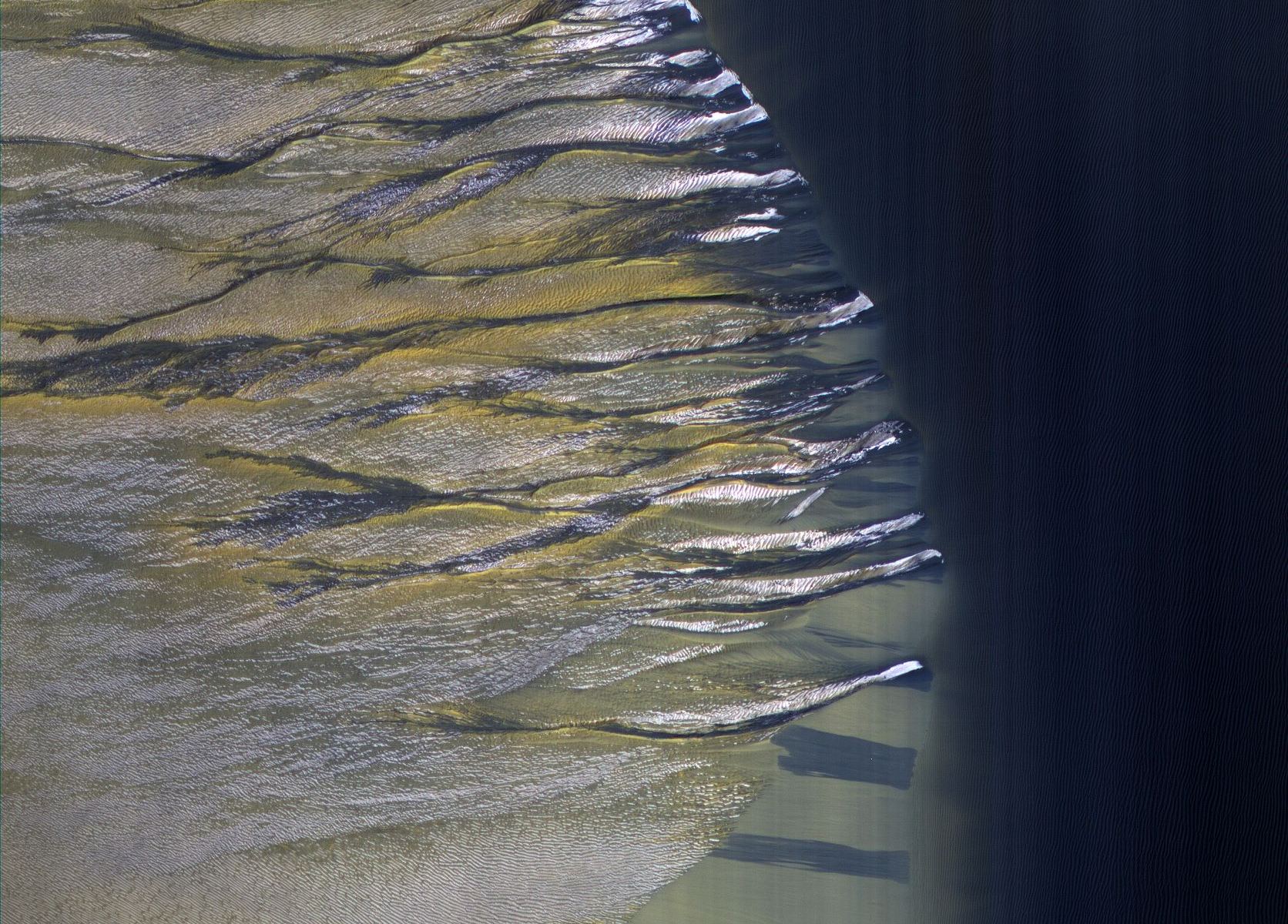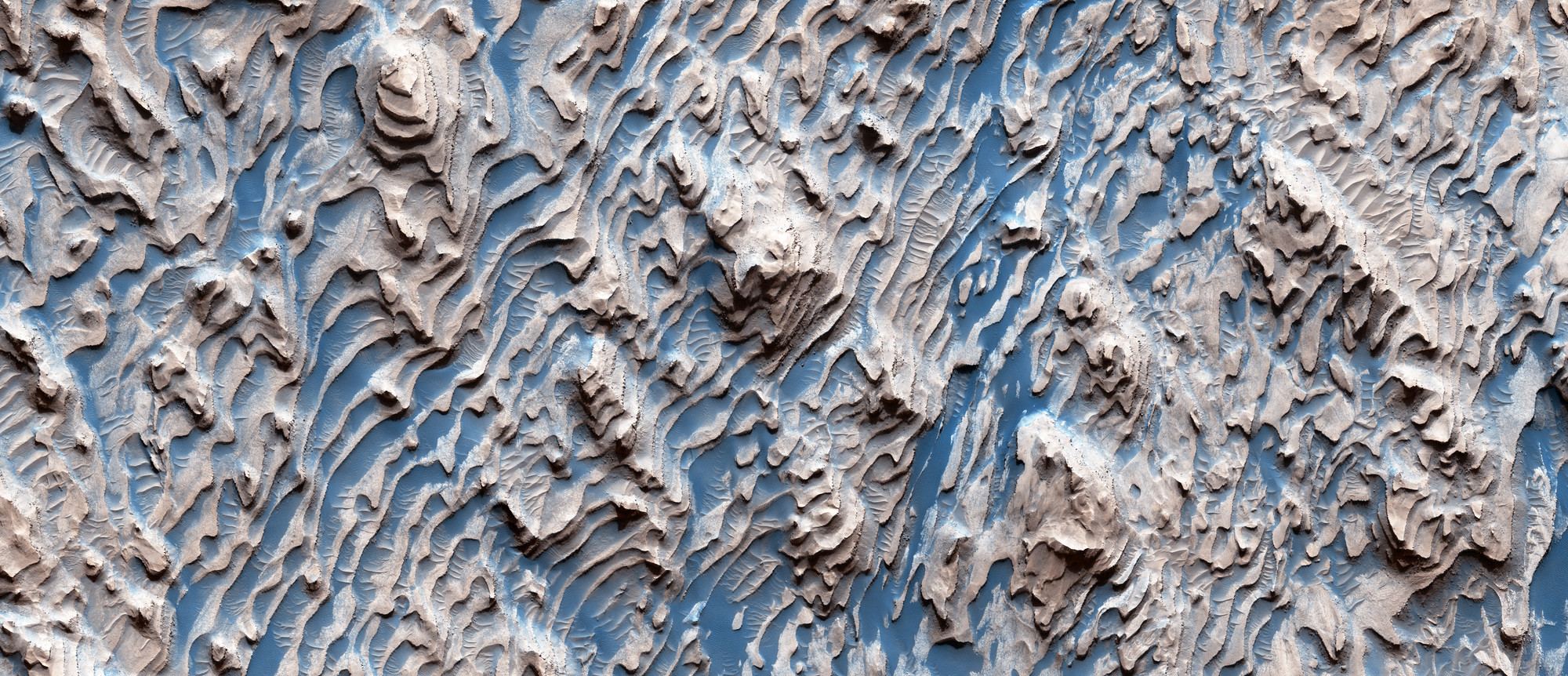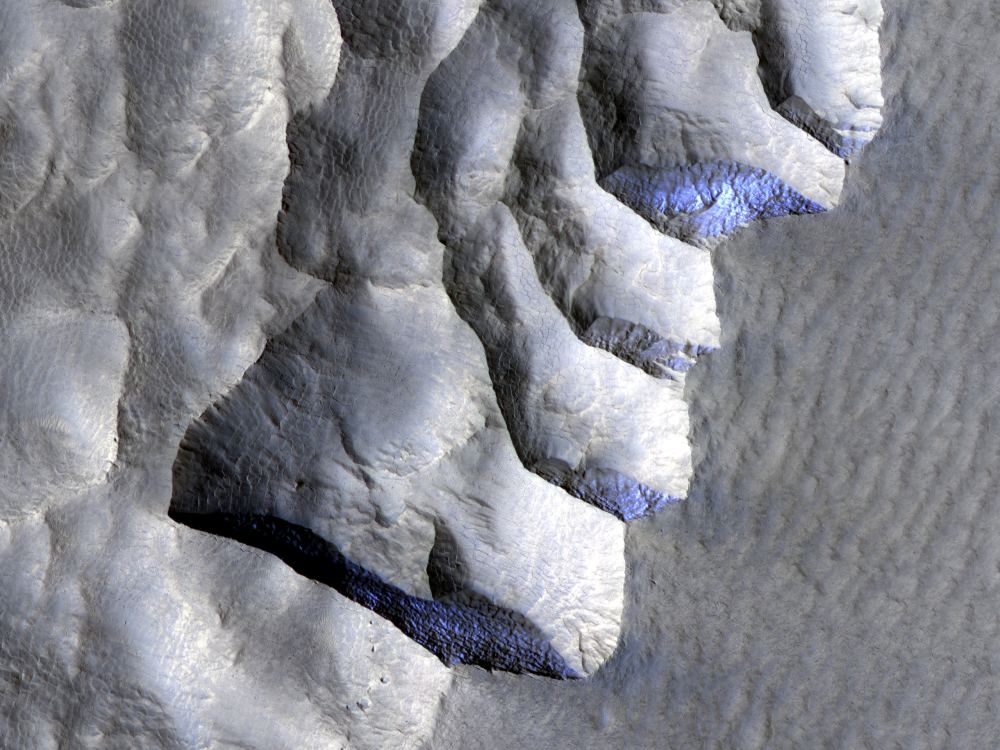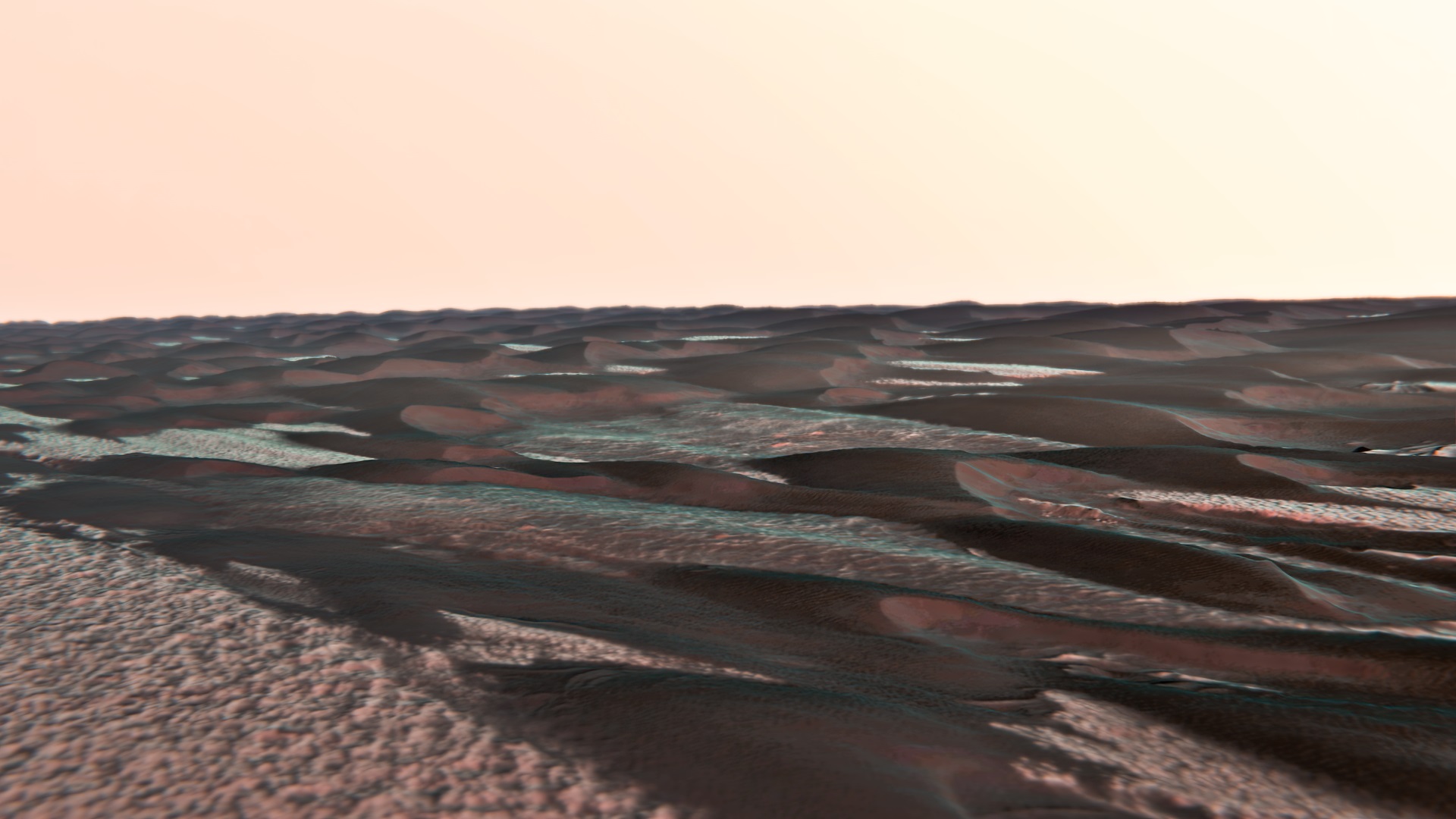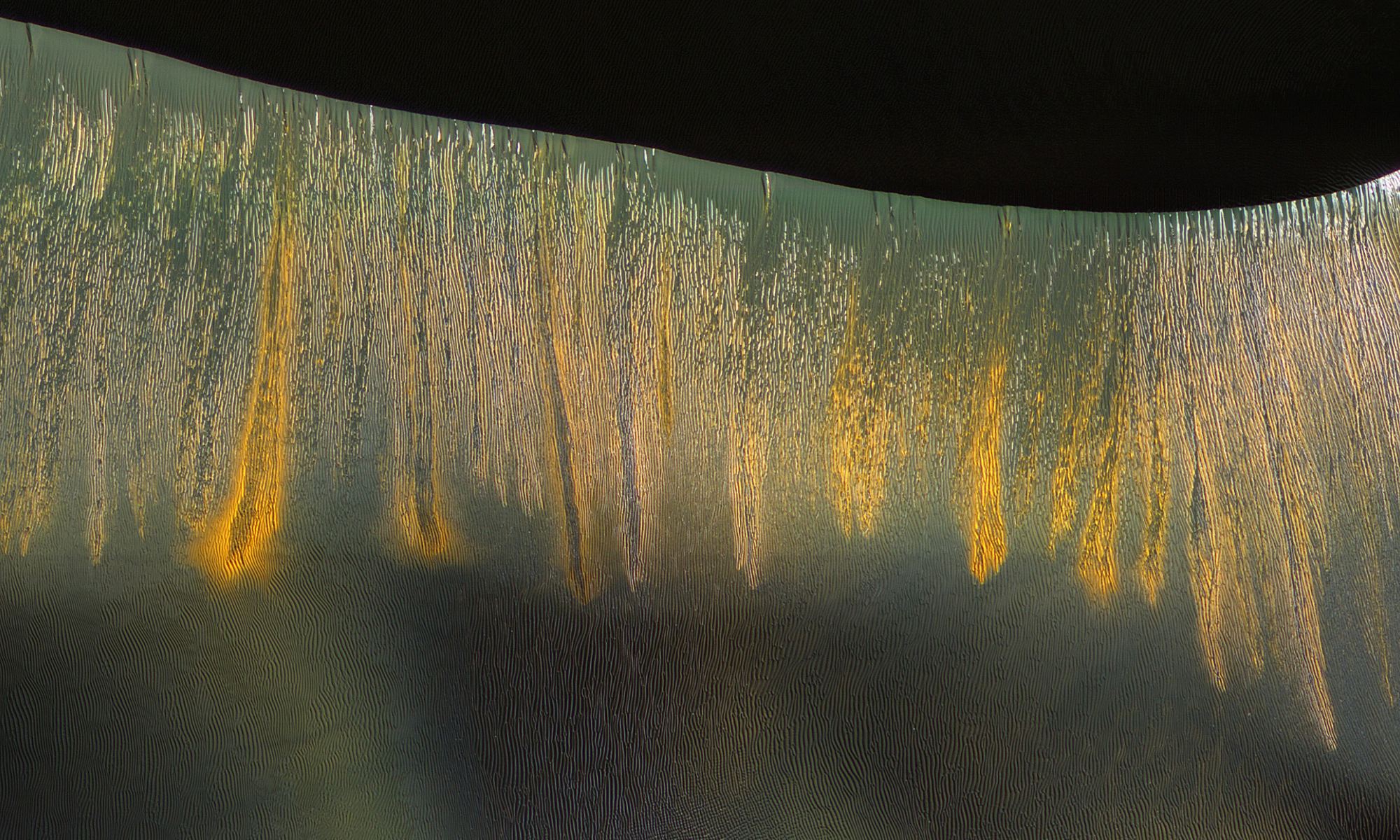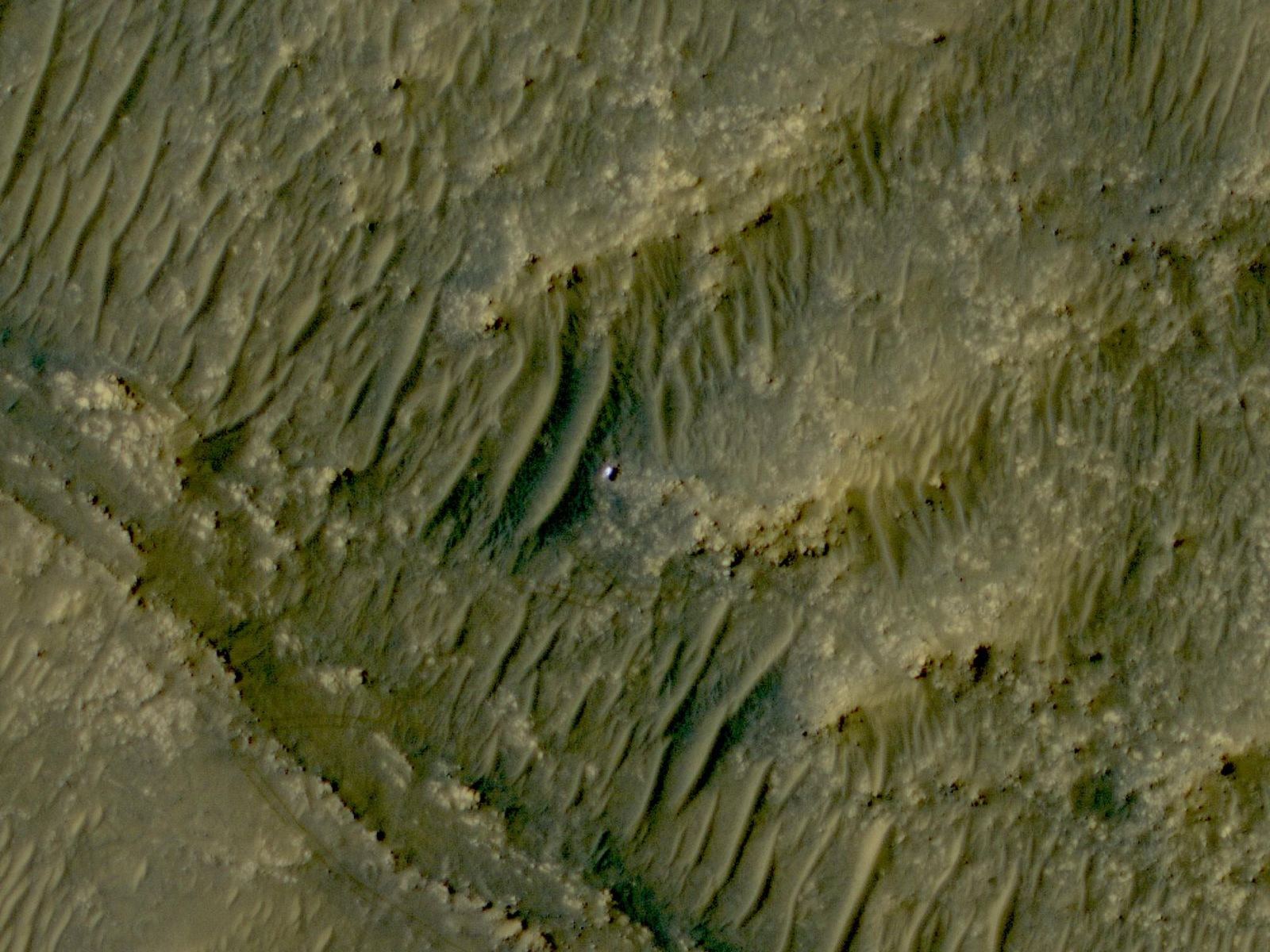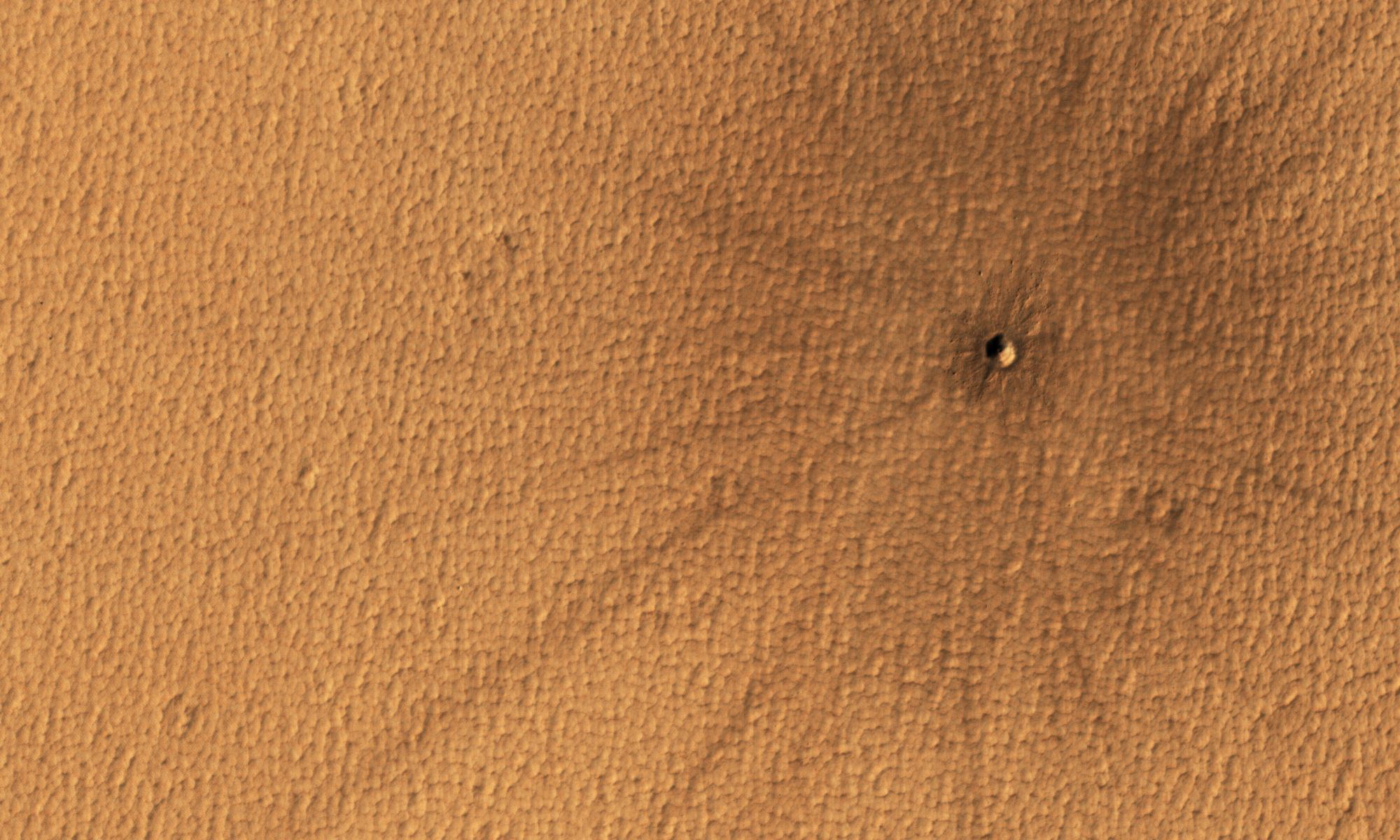Missions to Mars are expensive, even orbiters. They’re there to do science, not take pretty pictures. But sometimes Mars’ beauty is captured inadvertently, usually with some science mixed in.
That’s the case with this picture of star dunes captured by the HiRISE camera on NASA’s Mars Reconnaissance Orbiter.
Continue reading “These are Star Dunes on Mars, Formed When the Wind Comes From Many Different Directions”
